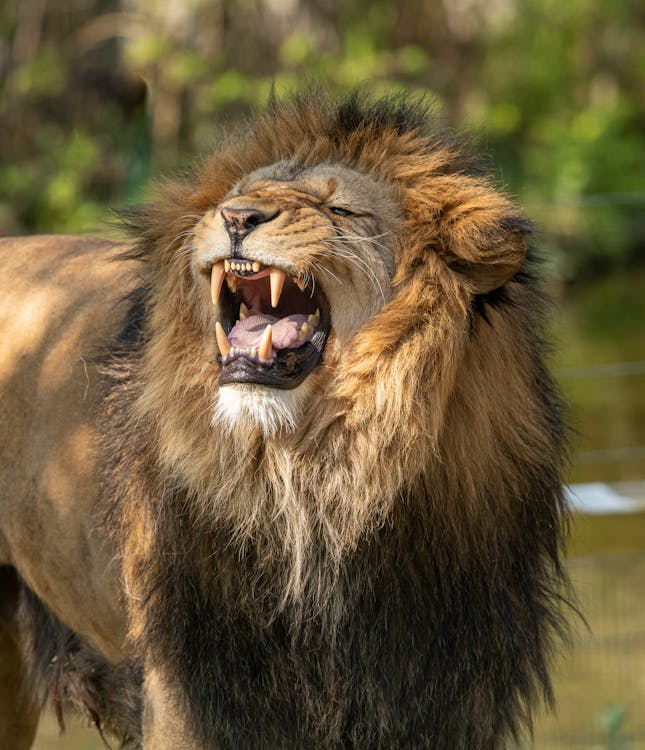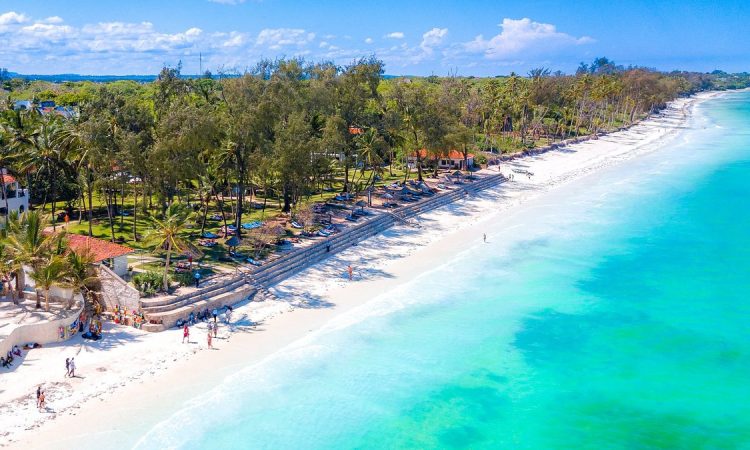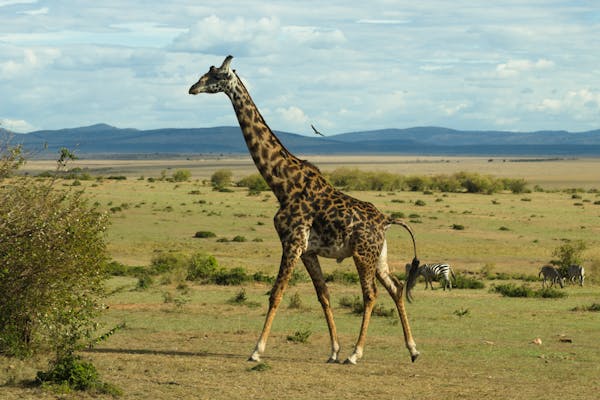Table of Contents
When and Where to See the Great Migration: The Ultimate Guide to Kenya’s Iconic Wildlife Spectacle
Few natural events can rival the scale, drama, and raw beauty of the Great Migration. Often described as the “8th Wonder of the World,” the Great Migration involves over 1.5 million wildebeest, 400,000 zebras, and hundreds of thousands of gazelles, antelopes, and predators crossing vast landscapes between Tanzania and Kenya in a continuous loop in search of fresh grazing grounds. For travelers flying to Kenya, witnessing this spectacular journey in the Maasai Mara is a once-in-a-lifetime safari experience. This guide offers everything you need to know about when and where to see the Great Migration, along with 10 insightful subtopics to help you plan the perfect adventure.
1. Best Time to Witness River Crossings
The highlight of the Great Migration for most safari-goers is watching thousands of wildebeest cross the crocodile-infested Mara River. This nail-biting drama usually unfolds from mid-July to late October, when the herds move north from Tanzania’s Serengeti into Kenya’s Maasai Mara National Reserve.
River crossings are not guaranteed every day. They depend on rainfall, herd movement, and predator behavior. Early morning and late afternoon game drives along the riverbanks offer the best chance of seeing these thrilling scenes.
2. Great Migration Calendar: Month-by-Month Breakdown
Understanding the general movement of the herds can help you plan your trip more precisely:
- January – March: Calving season in the southern Serengeti (Ndutu area). Good for witnessing predator-prey interaction.
- April – May: Rainy season; herds begin moving northwest. Travel can be muddy and less predictable.
- June: Dry season begins; herds gather near the Grumeti River in western Serengeti.
- July: First crossings into the Mara begin.
- August – September: Peak Mara River crossings in Maasai Mara.
- October: Wildebeest slowly begin migrating back to the Serengeti.
- November – December: Rainfall in the south pulls herds back into southern Serengeti for calving.
3. Top Camps and Lodges for Migration Viewing
Staying in the right place increases your chances of being near the action. Here are some top recommendations:
- Governor’s Camp: Located near the Mara River, perfect for photography.
- Entim Mara: Close proximity to major crossing points.
- Kichwa Tembo Tented Camp: Luxurious setting with access to migration routes.
- Elewana Sand River Mara: Ideal for early crossings in July.
- Mara Serena Safari Lodge: Strategically placed with panoramic views.
These lodges offer guided game drives, bush breakfasts, and experienced trackers to optimize your experience.
4. Best Locations in the Maasai Mara for Migration Sightings
The Maasai Mara is divided into several regions, but some areas are migration hotspots:
- Mara Triangle: Western section, offers excellent river crossing views and fewer crowds.
- Talek Area: Central Mara with many camps, ideal for general game viewing.
- Musiara Marsh: Great predator sightings and a popular area for BBC documentaries.
- Sand River Area: Close to the Tanzania border, good for early migration arrivals.
Local guides are invaluable here, as they track the movement of the herds in real time.
5. Photographing the Great Migration: Tips & Equipment
Capturing the essence of the migration requires more than a smartphone. Here are a few tips:
- Use a DSLR or mirrorless camera with a telephoto lens (minimum 300mm).
- Carry extra memory cards and batteries.
- A bean bag or monopod can help stabilize your camera in the vehicle.
- Shoot in the early morning or late afternoon for the best lighting.
- Be respectful of animals—never pressure your guide to get too close.
A good safari guide can position you for the best photographic angles while respecting wildlife safety and ethics.
6. How to Avoid the Crowds During Migration Season
While the Great Migration draws thousands of visitors, you can still find quieter experiences:
- Visit private conservancies like Olare Motorogi, Naboisho, or Mara North.
- Travel during the shoulder seasons in early July or late October.
- Opt for fly-in safaris to access remote areas.
- Choose smaller camps that host fewer guests.
These options provide a more intimate experience and often allow off-road driving and night safaris.
7. Migration vs. Calving Season: What’s the Difference?
While the Mara crossings are the most famous part of the migration, the calving season in Tanzania (Jan–Mar) is equally dramatic.
During this time, over 500,000 wildebeest calves are born within a few weeks. This attracts large numbers of predators such as lions, hyenas, and cheetahs. It’s a spectacle of life and death, with incredible photographic opportunities.
For a full migration experience, consider a two-part safari—calving season in Tanzania and river crossings in Kenya.
8. Is the Migration Always in the Maasai Mara?
Not exactly. The migration is dynamic and weather-driven, which means its timing and routes can vary slightly each year.
The Maasai Mara sees the herds only for about 3–4 months (Jul–Oct). Outside that period, most of the migration occurs within the larger Serengeti ecosystem in Tanzania. However, even when the migration isn’t in the Mara, Kenya still offers incredible wildlife viewing year-round, including the “resident” wildebeest and predators.
9. Guided vs. Self-Drive Safari for Great Migration
Choosing between a guided or self-drive safari depends on your travel style:
Guided Safari:
- Expert local knowledge
- Stress-free logistics
- Better chances of spotting wildlife
Self-Drive Safari:
- Budget-friendly
- Flexibility in route and timing
- Requires 4×4 vehicle and knowledge of terrain
For the migration, a guided safari is strongly recommended due to the complexity of following herd movements.
10. Why the Great Migration is Called the “8th Wonder of the World”
This title comes from the staggering scale and endurance of the migration:
- Over 2 million animals on the move
- A 3,000 km circular route between Serengeti and Mara
- Constant predator-prey interactions
- Natural selection and survival instincts at their most raw
The migration isn’t just about movement—it’s a story of life, death, and resilience that has captivated scientists, photographers, and travelers for generations.
Additional Tips for Planning Your Great Migration Safari
- Book Early: Peak migration season is in high demand. Secure your lodge at least 6–12 months in advance.
- Vaccinations: Yellow fever certificate required. Malaria prophylaxis is highly recommended.
- Travel Insurance: Include medical evacuation and trip cancellation.
- What to Pack: Neutral-colored clothing, binoculars, sunscreen, insect repellent, and layered clothing for cold mornings.
- Fly-In vs. Drive-In: Consider flying into the Mara to save time and enjoy aerial views.
Final Thoughts
Witnessing the Great Migration in Kenya’s Maasai Mara is more than just a wildlife encounter—it’s an emotional, transformative experience that immerses you in the rhythms of the wild. Whether you’re a first-time safari-goer or a seasoned traveler, this spectacle promises unforgettable moments that blend nature’s power with its awe-inspiring beauty.
By understanding when and where to go, choosing the right lodge, and preparing thoughtfully, you can maximize your chances of experiencing this natural wonder in all its glory. Plan ahead, travel with respect, and let the Great Migration leave its mark on your soul.




